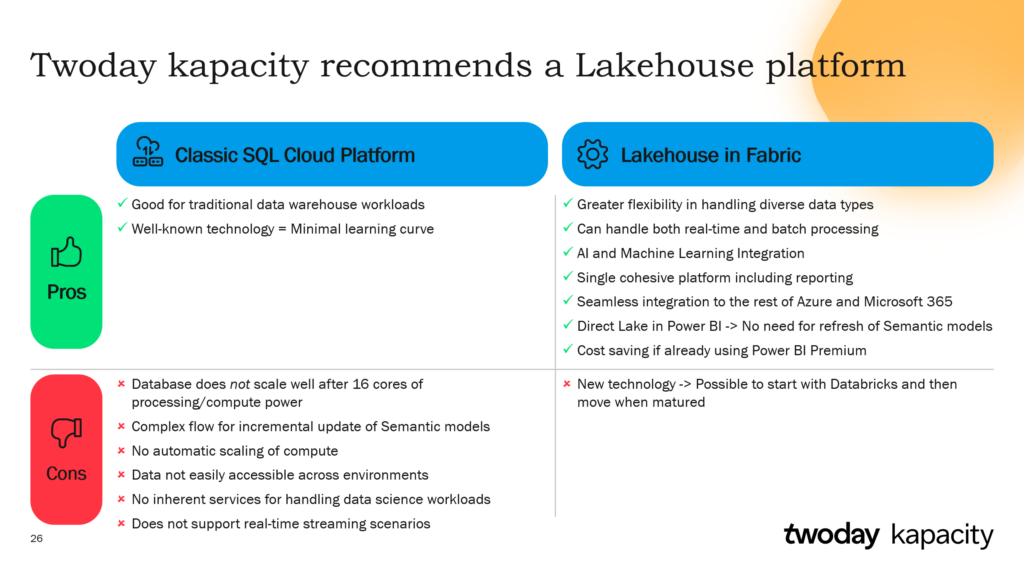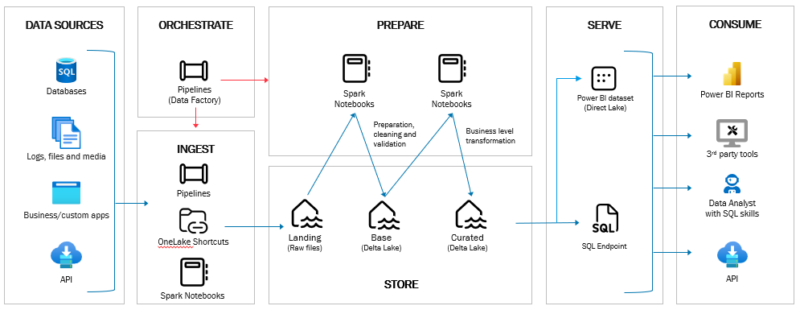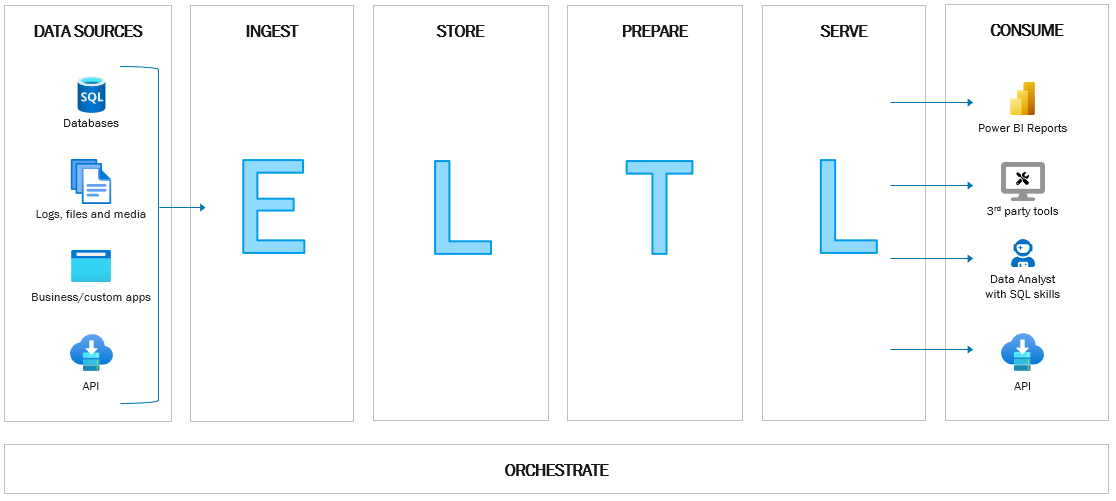As I gear up for our twoday kapacity seminar in Aalborg today, I’m thrilled to share some insights from my collaborative work with Klaus Guldberg Ulsøe. Together, we’ve compared the tried-and-true Classic SQL Cloud Data Platform against the emerging Data Lakehouse in Microsoft Fabric.

✅ Pros: Classic SQL Cloud Data Platform
- Ideal for Traditional Workloads: Excellently suited for traditional data warehouse tasks.
- Familiar Technology: Offers a minimal learning curve due to its well-known nature.
- Mature Ecosystem: Features a robust range of tools and integrations.
❌ Cons: Classic SQL Cloud Data Platform
- Limited Scalability: Struggles to scale efficiently beyond 16 cores of processing power.
- Complex Incremental Updates: Managing incremental updates for semantic models can be intricate.
- Lack of Automatic Scaling: Absence of auto-scaling for compute resources.
- Restricted Data Accessibility: Challenges in accessing data across different environments.
- Limited Data Science Capability: Inherent services for handling data science workloads are lacking.
- No Support for Real-Time Streaming: Inadequate for real-time data streaming scenarios.
✅ Pros: Data Lakehouse in Microsoft Fabric
- Versatile Data Handling: Capable of managing a wide range of data types.
- Real-Time and Batch Processing: Efficiently handles both real-time and batch data processes.
- AI and ML Integration: Integrated support for Artificial Intelligence and Machine Learning.
- Unified Platform: Offers a single, cohesive solution including reporting.
- Seamless Azure Integration: Easily integrates with the rest of Azure and Microsoft 365.
- Direct Lake in Power BI: Eliminates the need for frequent compute intensive refreshes of semantic models.
- Cost-Effective: Potential savings, especially for organizations with Power BI Premium.
❌ Cons: Data Lakehouse in Microsoft Fabric
- Emerging Technology: Though promising, it’s a relatively new technology with an evolving landscape.
- Initial Adoption Caution: Consider to start with Databricks and the transitioning as the technology matures.
Conclusion
Deciding between a Classic SQL Cloud Data Platform and a Data Lakehouse in Fabric hinges on your specific data needs and organizational context. If you prioritize familiarity and a mature ecosystem for traditional workloads, the Classic SQL Cloud is your go-to. However, for flexibility, real-time processing, and AI integration, the Data Lakehouse in Fabric presents an innovative path, especially for those already integrated into the Azure and Microsoft 365 ecosystems.


